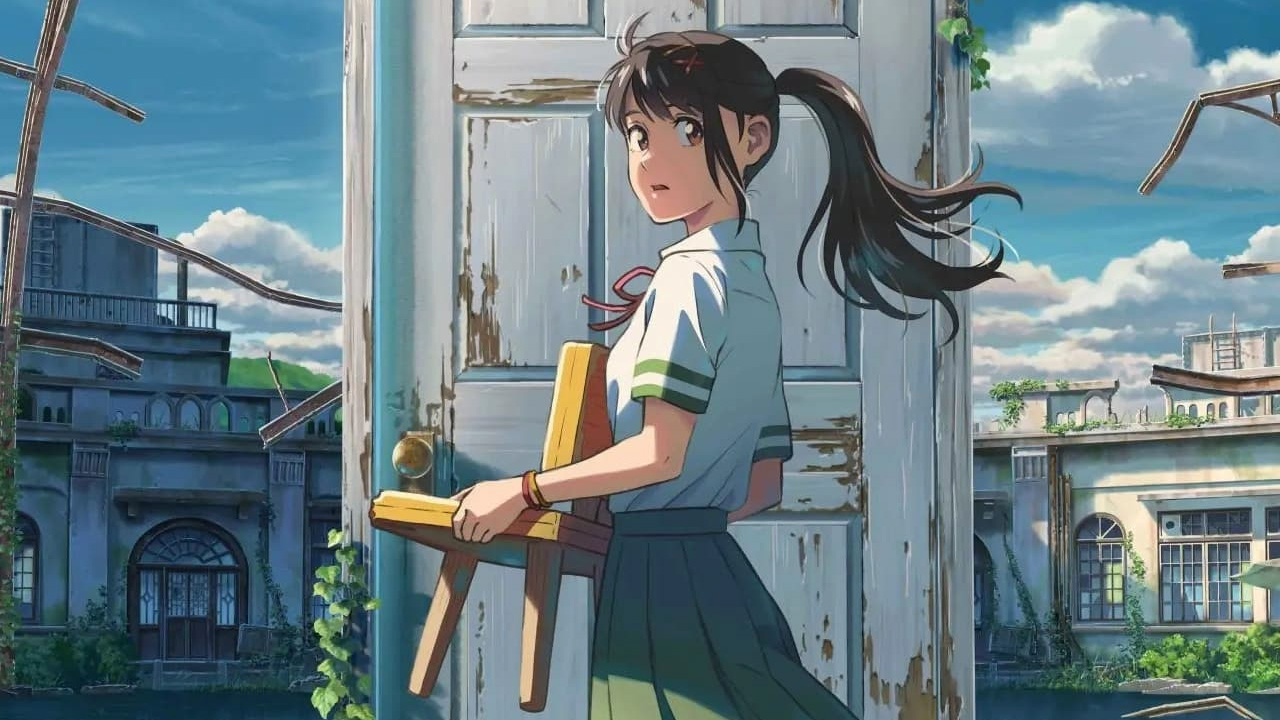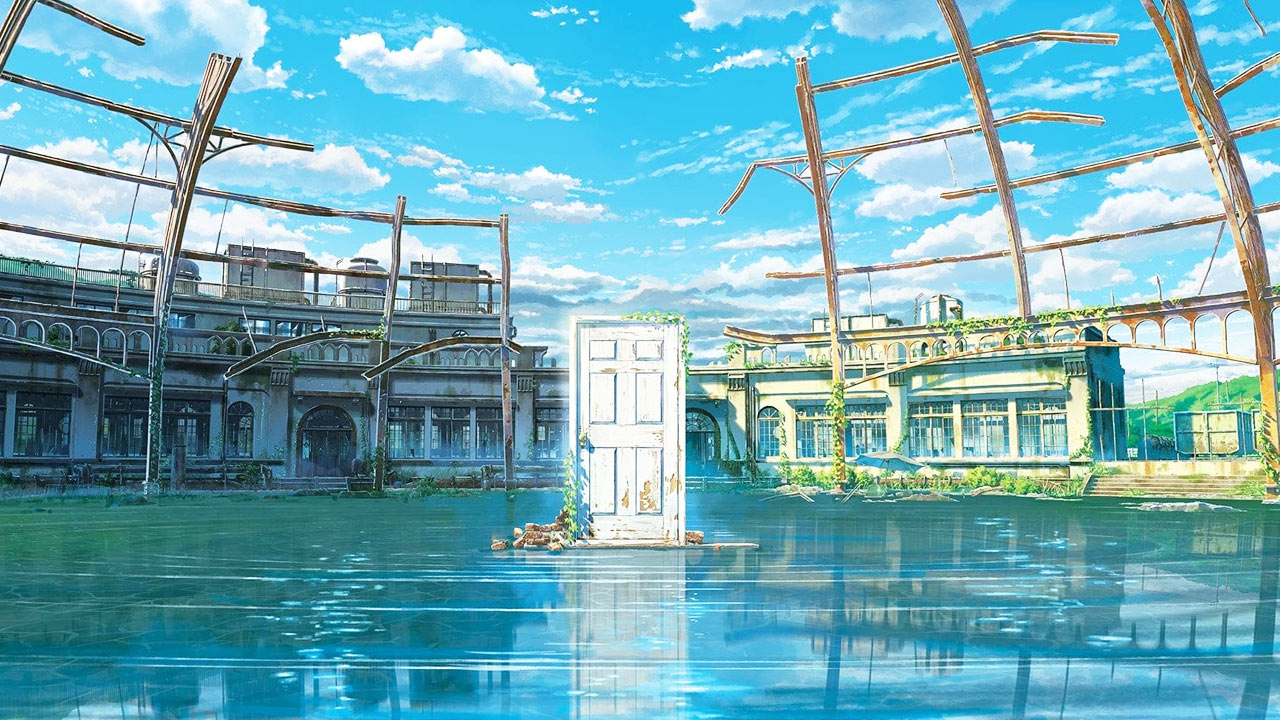Suzume dreamily combines personal and ecological apocalypse

Move over, Mario: Japanese auteur Makoto Shinkai’s new film Suzume is a beautiful, big-thinking animation filled with coloured and spectacle, writes Luke Buckmaster.
In Suzume there is, quite literally, something funny in the air. This thing is huge and red, taller than a skyscraper and longer than a city block, with tornado-esque whorls and winds and an eerie coiling structure—like a headless dragon or a trailing plant from hell. Writer/director Makoto Shinkai uses it to visualise and symbolise the force behind natural disasters. It’s pursued by the lead characters—the titular high school student (voiced by Nanoka Hara in the Japanese version, and Nichole Sakura in the English dub) and her new friend Sōta (Hokuto Matsumura/Josh Keaton)—with a gusto that’d make Helen Hunt and Bill Paxton blush. Yes, that’s a reference to the 1993 movie Twister.
This disaster-creating force is referred to as “the worm” and is controlled by a “Daijin,” who takes the form of a cute little kitty. Oh, and Sōta is a talking three-legged chair for most of the film. Are you keeping up?
When Suzume enters its second hour the aforementioned description of “the worm” feels inadequate, given the size and force of what it becomes, Shinkai cranking up the stakes and spectacle. Generally speaking, in fact, words struggle to capture the flavour of this terrifically realised and trippy film for several reasons. Most obviously because it deploys many fantastical images, as if painted by Howl in his moving castle, and also because it boldly fuses ecology and environment with human feelings, like previous (also excellent) films from Shinkai—including Your Name and Weathering With You.
One of the ways Shinkai achieves this is through backstory information about Suzume’s mother dying during an earthquake. This might’ve felt like contrived sentiment in a lesser film, but here it’s another way for the director to blur inner and outer worlds, and to make catastrophe personal. The point has been previously made that this merging of mindframes with eco-apocalypse has great currency in the era of climate crisis.
The week before I experienced Suzume, I watched an enjoyable and pleasant-mannered family film called The Portable Door, about an employee of a mysterious corporation searching for a magical door that can transport people anywhere they wish. There’s something enticingly surreal about the mundanity of a door turned magical, literalising the concept of “crossing over.” Except in Suzume’s case, she can’t get through; the door won’t allow her to access the magical-looking Ever After on the other side of it. Her meddling with the door does, however, allow the carnage-creating worm to enter our reality, prompting Suzume and Sōta to race around trying to thwart it, their heroism going unnoticed.

Shinkai is great at combining emotions and atmosphere, merging inner and outer, messing up and subjectivising external reality. Instead of asking the writer’s room questions that drove productions such as Breaking Bad—“where’s the character’s head at?” and “what happens next?”—his questions are environmentally aligned: like “where’s the character’s head at?” and “how does this relate to the fabric of the wider world?” Shinkai makes spiritual connections between people, land, and their ancestors, and while kooky and grandiose, snacking on weird impenetrable lores, it somehow doesn’t feel like mystic bilge.
Suzume’s visions of the natural world resonate, as they did in Your Name and Weathering With You. Images of glistening bodies of water early in the runtime remind us that animated visions of nature enter a magical space “real” footage cannot. The latter, notwithstanding post-production manipulation, is limited to what was recorded. Freed from the tyranny of the camera, animated aesthetics can incorporate not just what natural environments look like, but how we remember them, and how they make us feel. There’s lots of feelings in Suzume: a big film, with big emotions and big ideas, presented boldly and beautifully.




















